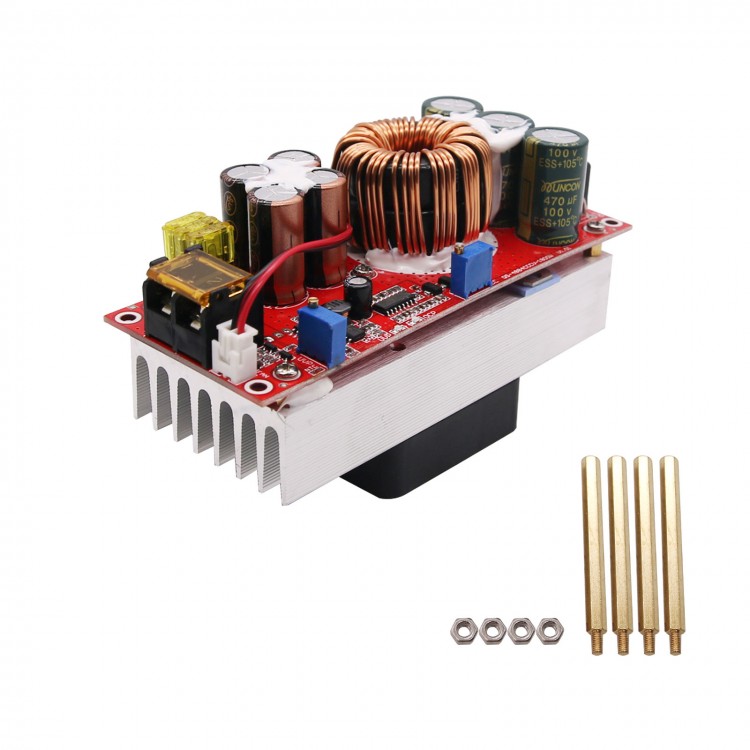
| Quantity | 3+ units | 10+ units | 30+ units | 50+ units | More |
|---|---|---|---|---|---|
| Price /Unit | $25.19 | $24.67 | $23.90 | $22.87 | Contact US |
 M5Stack Atomic Echo Voice Recognition Base ES8311 Mono Audio Decoder MEMS Microphone for M5 Atom Series
$15.79
M5Stack Atomic Echo Voice Recognition Base ES8311 Mono Audio Decoder MEMS Microphone for M5 Atom Series
$15.79
 M5Stack LLM Offline Large Language Model Inference AI Module Set AX630C Processor 4GB LPDDR4 32GB EMMC5.1
$75.03
M5Stack LLM Offline Large Language Model Inference AI Module Set AX630C Processor 4GB LPDDR4 32GB EMMC5.1
$75.03
 M5Stack Atomic Battery Base Portable Power Base Built-in 200mAH Battery ETA9085E10 Boost Chip
$15.79
M5Stack Atomic Battery Base Portable Power Base Built-in 200mAH Battery ETA9085E10 Boost Chip
$15.79
1500W 30A Boost DC-DC Converter Power Supply Step-Up Module 12V 24V 48V to 48V 60V 72V
Features:
- Non-isolated boost module constant voltage constant current.
- Adjustable output voltage and current.
- Adjustable input parameters.
- Multiple Protection: Under-voltage protection, over-temperature protection, short-circuit and reverse connection protection.
- Heat sink features excellent heat dissipation performance with larger output power. Temperature control fan makes a balance between noise and heat dissipation. When it is loaded lightly, the fan does not work. When it is loaded heavily and the temperature reaches to 60℃, the fan will work automatically. It can cut down noise and prolong its service life.
- Efficient Heat Conduction: The insulation board of the main power tube is made of high-grade alumina, and its thermal conductivity is 10 times that of the ordinary ones. Constant copper wire output current sampling, with constant current small temperature drift. With 4pcs 1.2 pure copper enameled wires wound around, large-size iron-silicon-aluminum magnetic rings feature low heat generation and high efficiency.
- High frequency capacitors are used for both input and output. Low output ripple, low heat generation and long service life.
- The conversion efficiency stands at 98.1%. The 100V 210A TO-247 large package power tube features large power margin and amazing dynamic response. 3296W potentiometer features high adjustment accuracy and small drift.
- 3pcs 20A fuses in parallel to avoid the risk of output short-circuit.
- MLCC ceramic capacitors are added to the input and output. The output ripple is significantly reduced. At 48V to 72V 4A, it is about 100mV.
- 3 Indicator Lights: Status such as under-voltage, over-current, operating can be shown clearly.
Applications (Batteries are not included):
- This product is designed for lead-acid batteries, lithium batteries, solar cells or power boosts, boosting electric vehicles, and charging batteries.
- Boost Charger: 48V original battery of your electric vehicle can be boosted to 60V by this product to supply electric vehicles. It can increase the speed and acceleration of electric vehicles. It can also raise battery voltage to make electric car run faster. It is recommended that the increased should not exceed 10V.
- Charge your electric bikes. You can charge your primary battery with this boost power supply.
- Input can also be connected to solar cells, generators and other power sources, boosting the primary battery to increase the battery life.
- It boosts and regulates the voltage of solar panels.
Package Included:
- 1 x Boost Power Supply Step-Up Module 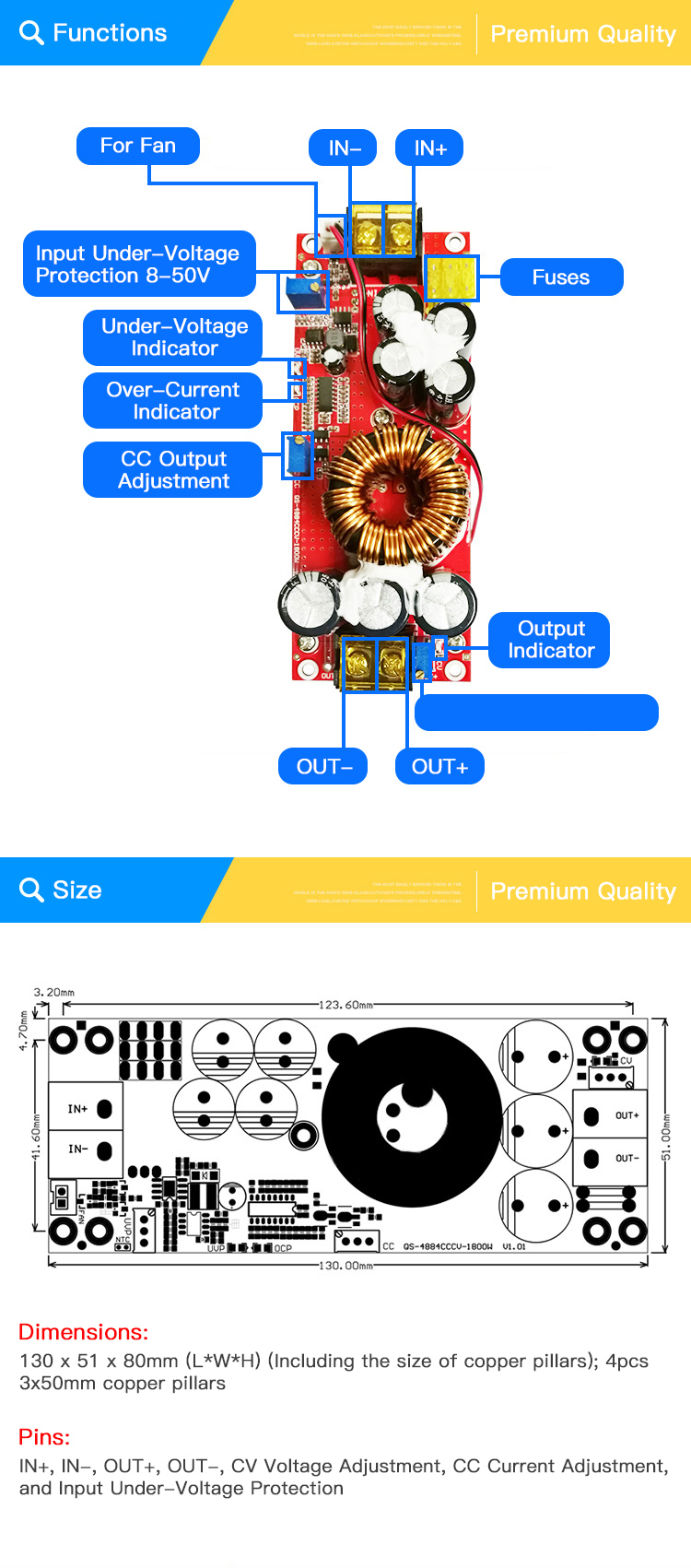
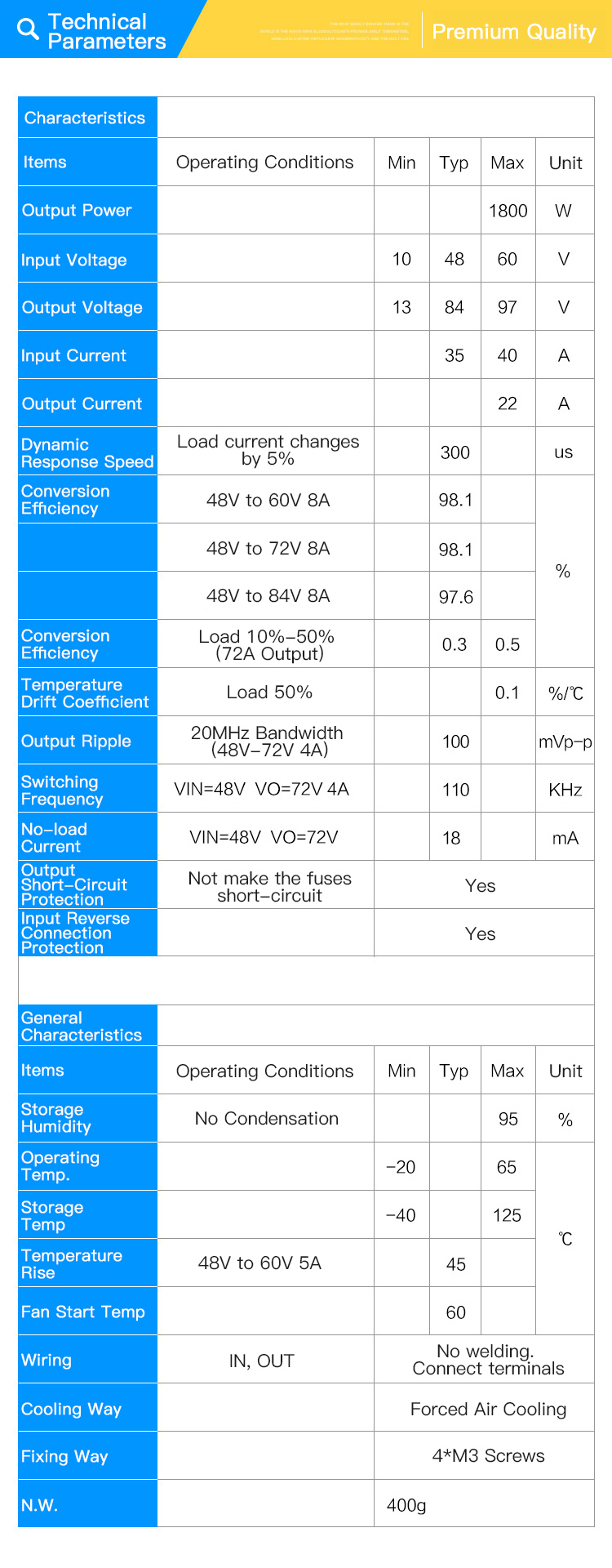
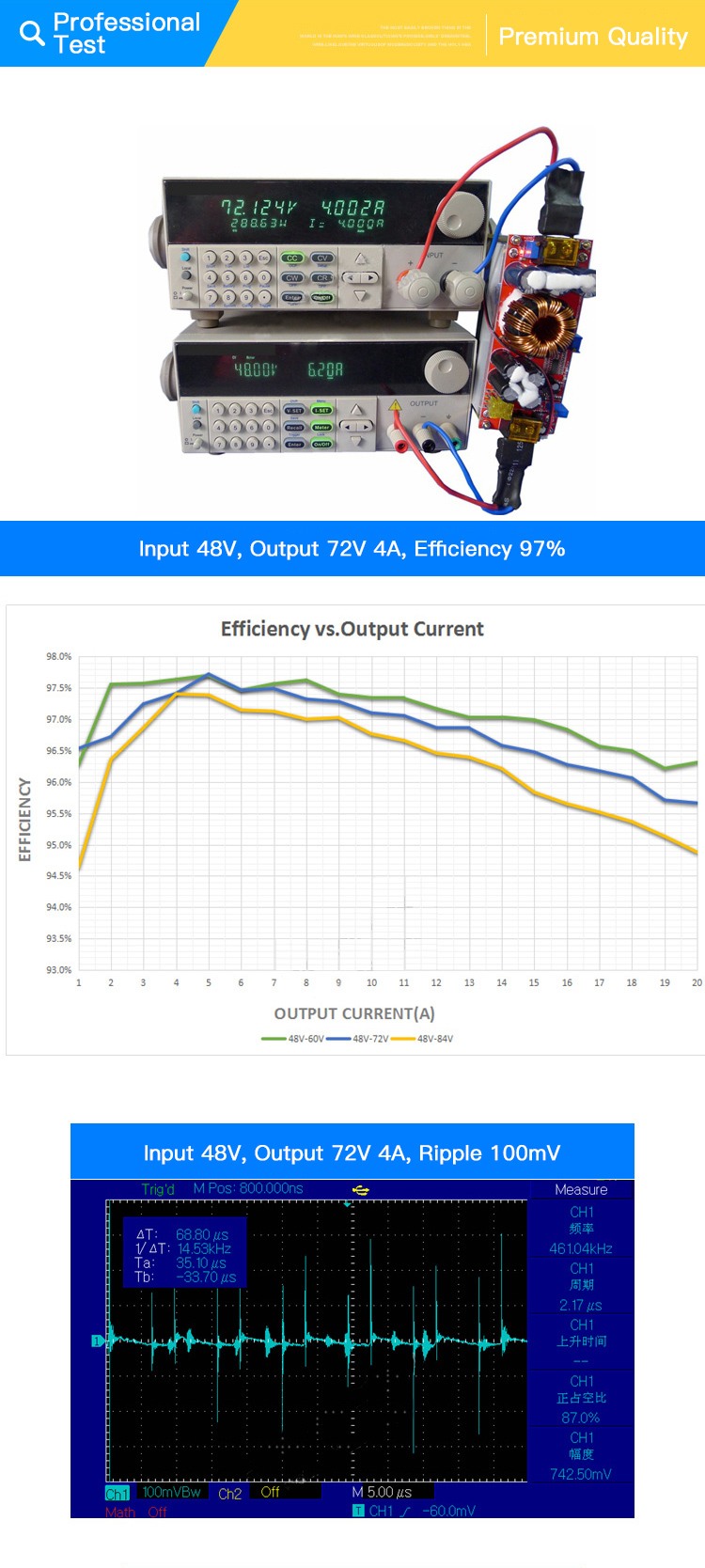
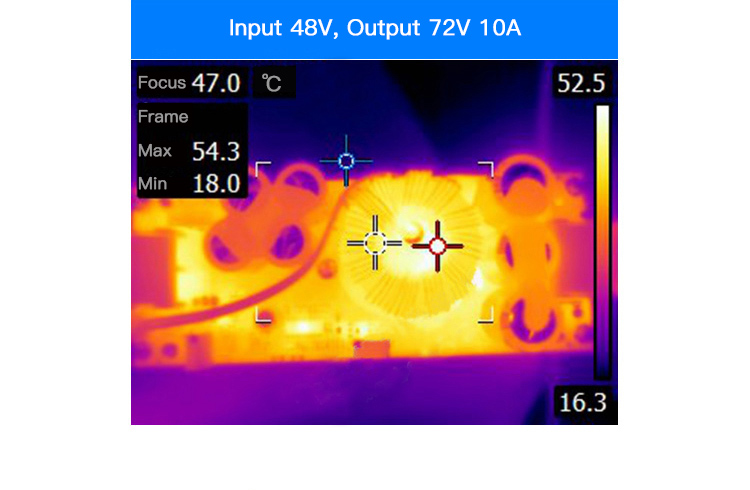
Output Voltage Adjustment:
- When it is powered on with no-load, use a screwdriver to adjust the output V-ADJ potentiometer. Turn it clockwise to increase voltage and turn it counterclockwise to decrease. Due to the large output capacitor capacity, when the output voltage is adjusted from a high voltage to a low voltage, the reaction speed will be slower. It is recommended that the adjustment be smaller.
Output Current Adjustment:
- Turn CC A-ADJ potentiometer counterclockwise for about 30 turns to set the output current to the minimum. Connect it to a load such as an LED battery and adjust the CC A-ADJ potentiometer clockwise to your needed current. For battery charging, after the battery is discharged, it is connected to the output, and then adjust CC A-ADJ to your needed current. Please use discharged battery to charge, because the more battery power remaining, the smaller the charging current.
Note:
- The default output current is adjusted to 10A. If other adjusted output current is needed, please contact us.
- Please do not adjust the current with short circuit output. The circuit structure of the boost module cannot be adjusted by short circuit.
Input Under-Voltage Protection Adjustment:
When the input power supply is a battery, under-voltage protection prevents the battery from being over-discharged. A battery voltage that is too low can damage the module and the battery. When the input is a power switch, it also needs to set under-voltage protection.
Method 1: For example, do settings of under-voltage protection for 12V battery. Connect a 11V voltage to the input port of the module. Adjust RV1 with a straight screwdriver (turn clockwise to increase the protection voltage, turn counterclockwise to lower the protection voltage) until the UVLO lamp is on, and the low voltage protection is 11V now. When the battery voltage drops to 11V, the module does not work. At this point, the input voltage is equal to the output voltage. Only when the input voltage is higher than 11V, the module automatically resumes starting the boost.
Method 2: Connect battery or switching power supply to the input port of the module. If on-board UVLO lamp is off, turn RV1 potentiometer clockwise until the UVLO lamp is on, and then turn it clockwise by two turns. If the UVLO lamp is on, turn the RV1 potentiometer counterclockwise until the UVLO lamp is off, and then turn it by two turns. (Applicable to 10V-45 voltage)
Note:
- Batteries are not included in the package.
- Please not connect the OUT- and OUT+ terminals reversely nor short-circuit.
- If used in an electric vehicle boost drive power supply, the input voltage must be higher than 24V and the electric vehicle power should be less than 500W.
- When using a battery, switching power supply, solar panel, engine, etc. as the input source, the battery protection voltage must be lowered, otherwise the battery and power supply may be damaged.
- When working for a long time with high current, high power and full load, please keep ventilation and heat dissipation to extend the service life of this module.
- The module can only boost and not step down. It is not used to supply electrical equipment below the input voltage. For example, you cannot charge a 12V battery with a 24V battery or charge a capacitor. It is not used to power LEDs below the input voltage.